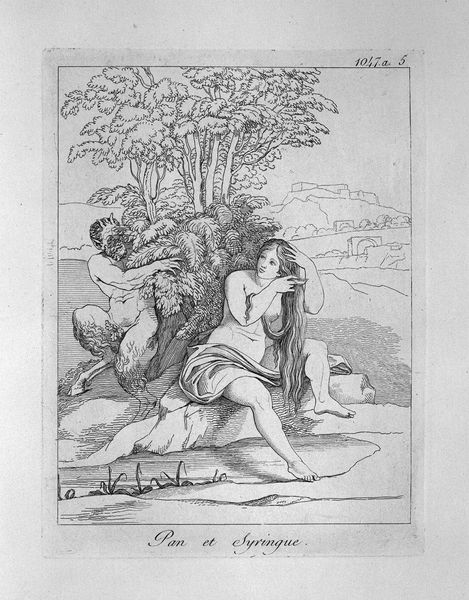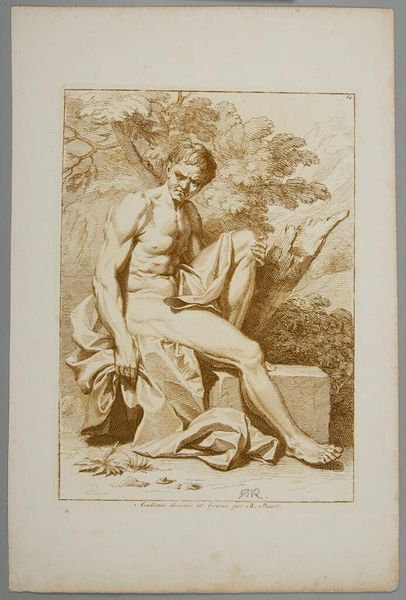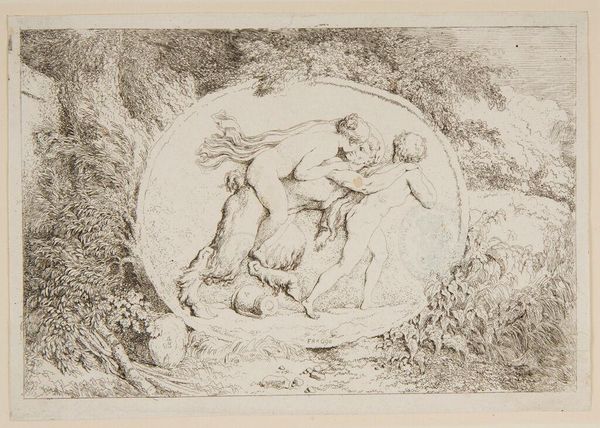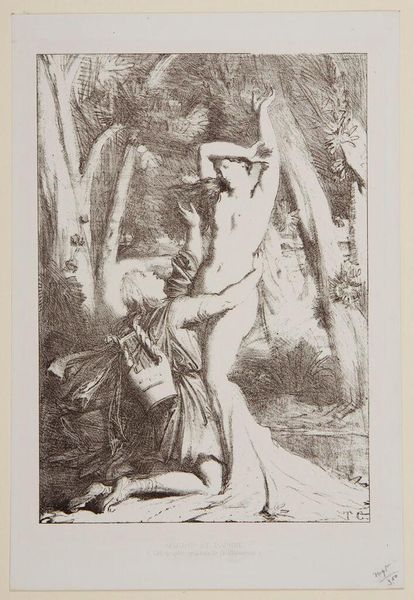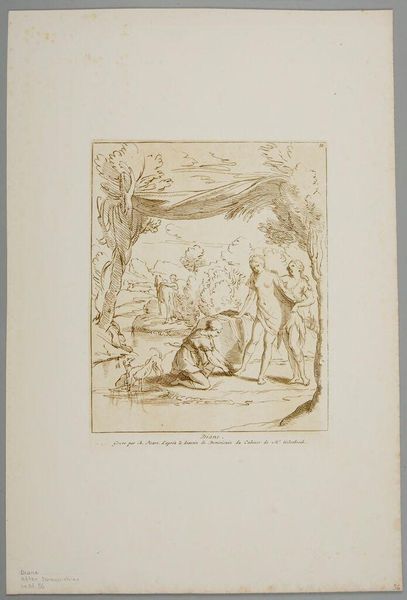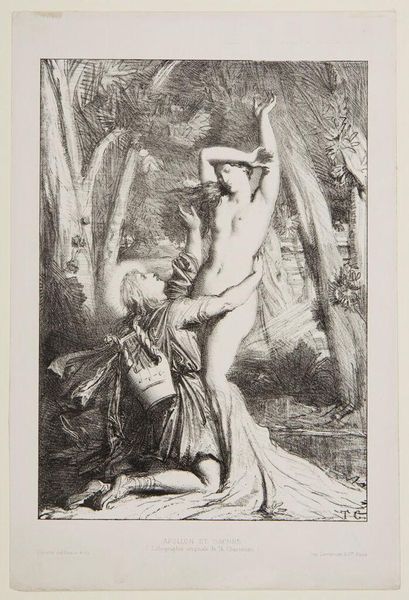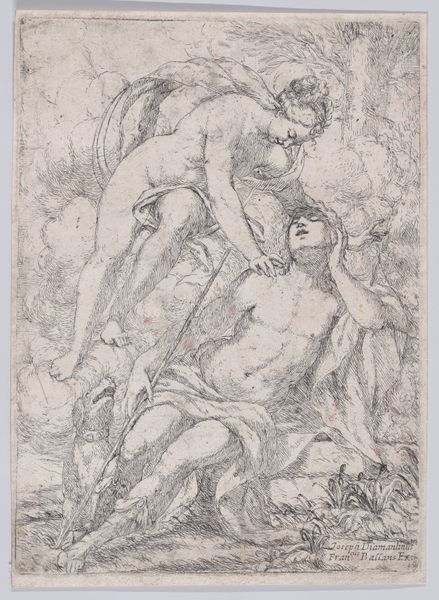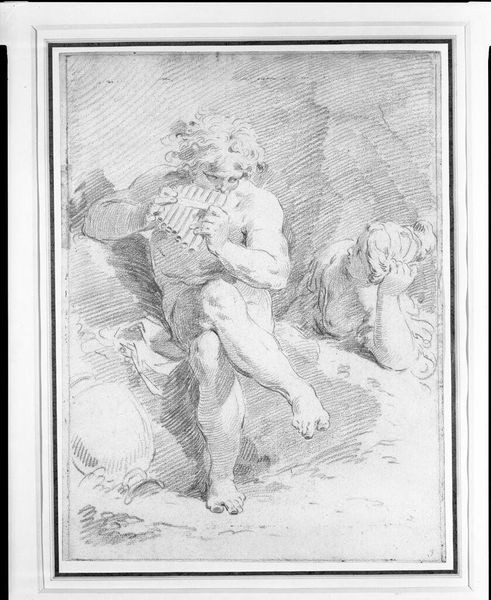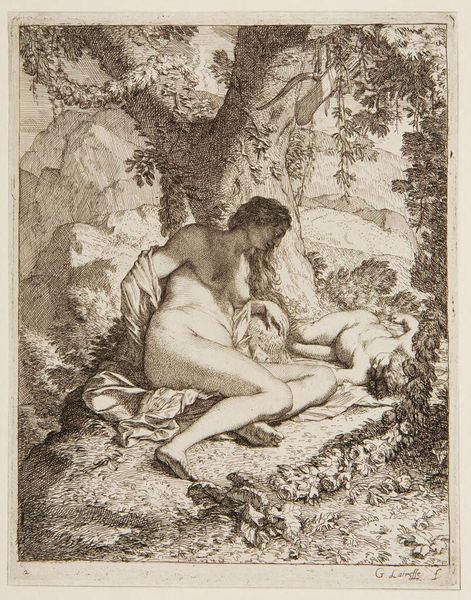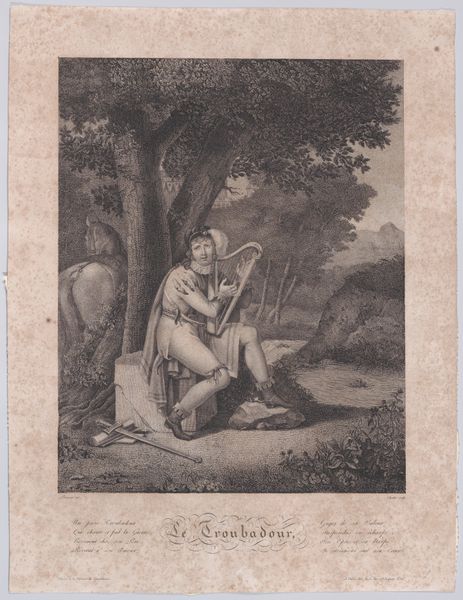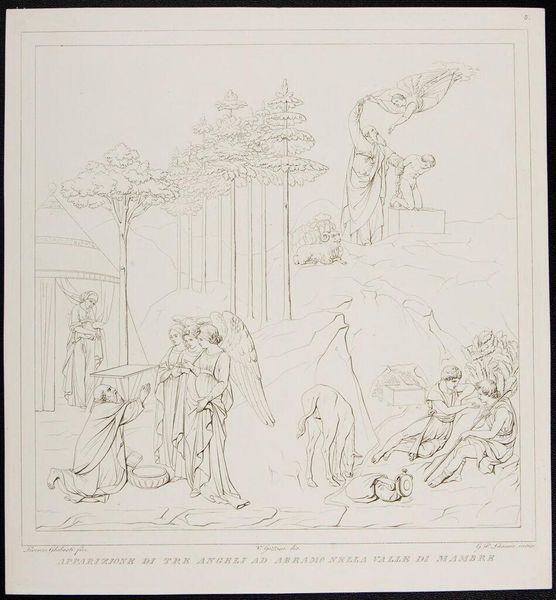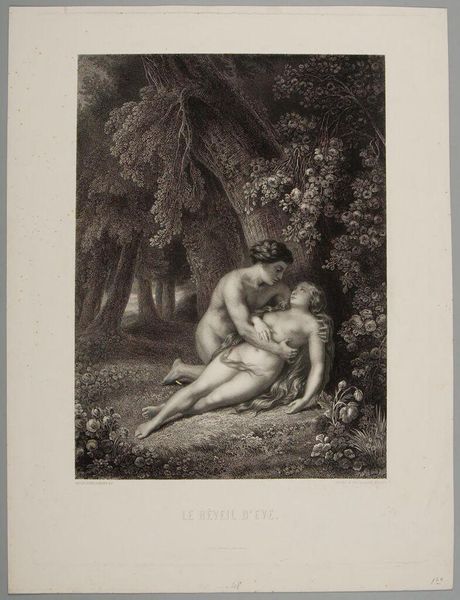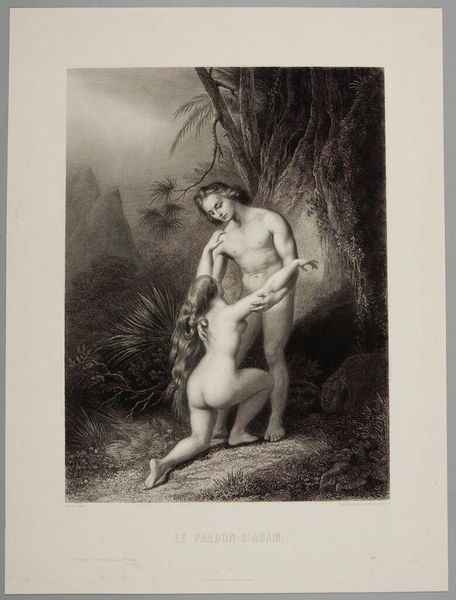
drawing, pencil
#
drawing
#
narrative-art
#
landscape
#
figuration
#
classicism
#
romanticism
#
pencil
Copyright: Public domain
Curator: This drawing by Pierre-Narcisse Guerin might be less known but is a beautiful narrative piece depicting "Philetus teacher Daphnis and Chloe." The pencil work renders a scene of instruction or perhaps even warning within the story. Editor: Immediately, I see echoes of Arcadia, an idyllic yet also subtly melancholy scene. The almost stark, unshaded nature of the figures reinforces this sense of classical simplicity, tinged with something harder, a world of material struggles perhaps. Curator: Right, there’s definitely that pull. It's interesting to me that Guerin chose pencil, a readily available, relatively inexpensive material, for this study. Was this medium employed to underline a narrative steeped in romanticism? Consider the potential connections to literacy and access to knowledge that the pencil as a tool might embody. Editor: Absolutely. I'm intrigued by the grouping of figures and objects and how each contributes to the story being told. We have Daphnis and Chloe embracing and an old teacher and a deer completing a pictorial definition for life and survival as if spelling out allegories and emblems for how they may come to pass. Curator: Let’s not forget the romantic lens often highlights the struggle to secure resources, as you suggest; a sense of hardship inherent to a seemingly idyllic rural lifestyle is evoked. Editor: But notice how idealized the figures are. Even in the midst of poverty or scarcity, there’s still this clinging to classic ideals of beauty. Curator: It reminds me of how certain social classes have historically depicted rural settings— a projection of longing or nostalgia or the romanticization of labor, perhaps concealing real hardships behind an aesthetically pleasing surface. Editor: Indeed, the artist shapes our consumption of the story by idealizing certain figures over others in an explicit classical definition, one that we seem intent on repeating still. The symbol, in this case the carefully drawn figure, almost serves as a historical artifact to better shape our contemporary social and political lens. Curator: Examining the marks themselves—the precise hatching and cross-hatching to achieve tone—provides further insight into Guerin's control of his craft and how drawing traditions, through practice and production, can shape our aesthetic and even our social values. Editor: In closing, exploring the symbology within such pieces allows us to consider that representations, particularly through idealized lenses, might still allow a reflection of our society today.
Comments
No comments
Be the first to comment and join the conversation on the ultimate creative platform.
